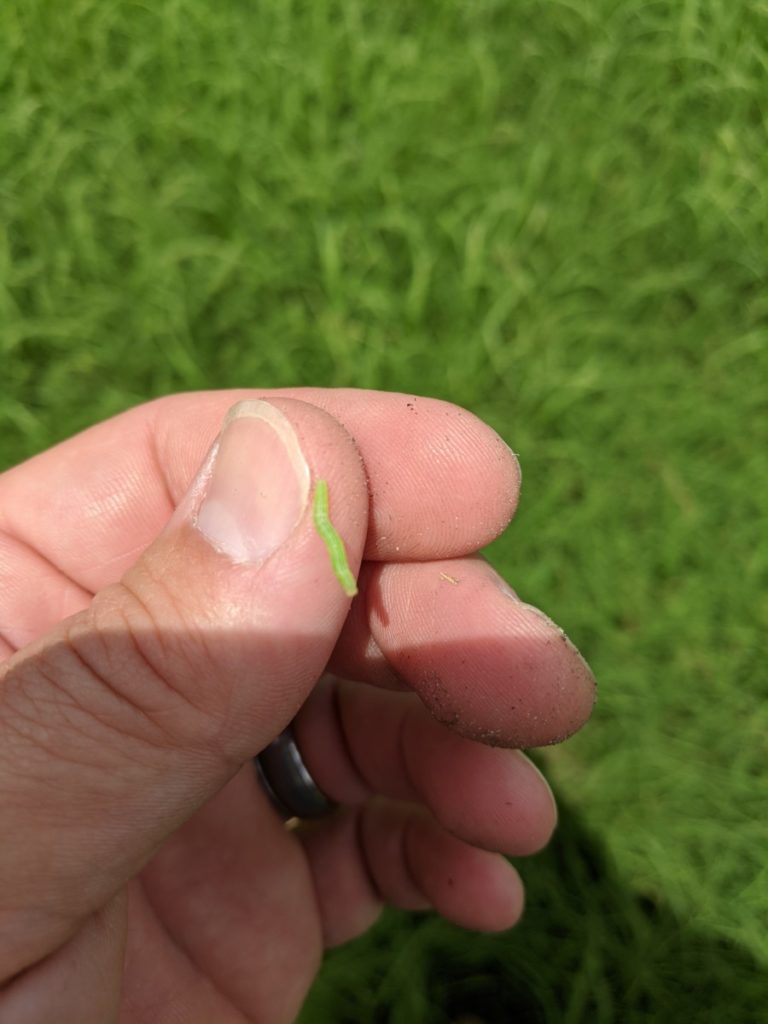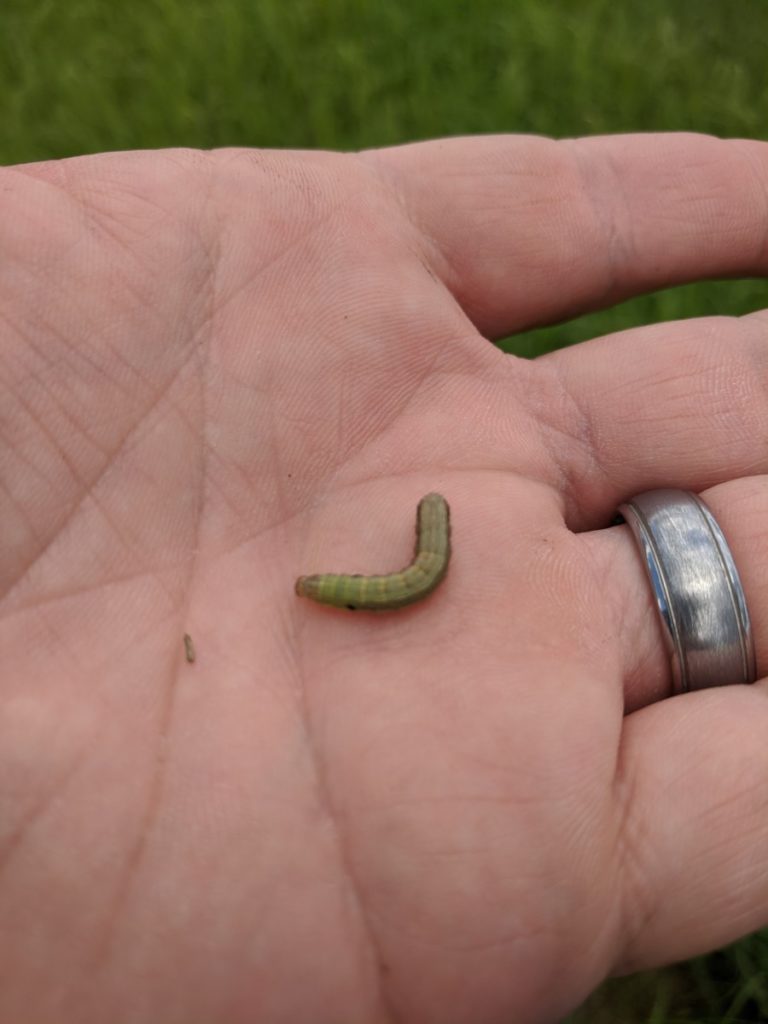

I had heard a few reports of some armyworms around, and so I went to check a few hay fields and found some. They were for the most part extremely small, but a few large ones scattered here and there. The populations I found were in the 1-2 worms per square foot range so nothing to get too excited over, but we need to be scouting hayfields, pastures, and peanuts. It will take an armyworm about 14 days from the time it hatches until it changes into a pupa. The last 3-5 days of the larval stage is when they do the most damage so if you find some of these little tiny ones you probably have a bout a week before they really start to work on your hay field. If you come across a bad infestation you need to treat them immediately or they can clean a hay crop out in a short period of time. Last year we had some issues with pyrethroid sprays not doing the job, and growers ended up respraying lots of fields. I would recommend going with a good worm material like besiege or intrepid edge. I know these are more expensive, but if you have to end up spraying twice you might as well do it right the first time. Dimilin is a good option for a preventative spray and it is very affordable. If you happen to be going over a field for stem maggot probably would be a good idea to through some dimilin in the tank for some added protection.
For any additional questions about armyworms contact the Evans or Candler County Extension Office.
Evans County Extension Office – 912-739-1292
Candler County Office 912-685-2408